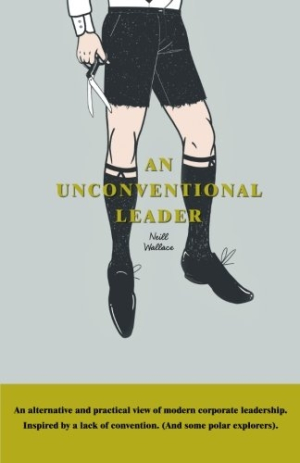An Unconventional Leader
Wallace’s enthusiasm for doing things unconventionally is infectious.
It is not hard to figure out that Neill Wallace is an unconventional guy. He left a successful business career, he writes, because it “made me feel restrained and left me sapped of my energy, my time, and my faith in corporate America.” One of the things Wallace realized after leaving his job was that unconventional leadership in business is a rarity. This led him to write An Unconventional Leader.
Combining his own business experience with his excellent observational skills, Wallace has written an unconventional business book. He questions and challenges the typical style of management, suggesting that common practice is “fitting leaders into a conventional mold.” What exactly is wrong with convention? Wallace uses an unusual example, that of three polar explorers (a personal fascination of his). The author relates the stories of Norwegian explorer Roald Amundsen, Irish explorer Ernest Shackleton, and English explorer Robert Falcon Scott. While all three led polar expeditions, it was Amundsen and Shackleton who were unconventional. Amundsen “showed no fear of uncharted paths,” and Shackleton “made a career of defying conventional rules.” Scott, however, was bound by rules, making calculations that assumed “everything would go off perfectly.” The first two explorers succeeded; the third failed.
The story of polar explorers is just one aspect of An Unconventional Leader that creates a different kind of business book. In well-written short chapters, Wallace makes an impassioned plea to the reader who wants to be a great leader to rise above convention, pay attention to the well-being of employees, and overcome the fear associated with charting a different path. The author writes with considerable grace about such topics as bravery, inspiration, honesty, duty, and responsibility—heady stuff that is as much about an attitude toward life as it is about leadership.
At the end of the book, Wallace includes his “Revolution Plan,” the action items he believes are necessary to break with convention. Even the plan is unconventional, however—it is an informal, loosely structured checklist of sorts but, writes Wallace, “none of these actions will really be completed,” because unconventional leadership is a continuous process.
An Unconventional Leader features easy-to-read text, a short but useful bibliography, and an unconventional cover: an illustration of a business executive, scissors in hand, who has cut the legs off his pants.
There is much to like about Wallace’s perspective on leadership, although some readers may be intimidated by the author’s advice to loosen up and defy convention in a business setting. Still, Wallace’s enthusiasm for doing things unconventionally is infectious. He has crafted a very readable, enjoyable, and uniquely different book.
Reviewed by
Barry Silverstein
Disclosure: This article is not an endorsement, but a review. The publisher of this book provided free copies of the book and paid a small fee to have their book reviewed by a professional reviewer. Foreword Reviews and Clarion Reviews make no guarantee that the publisher will receive a positive review. Foreword Magazine, Inc. is disclosing this in accordance with the Federal Trade Commission’s 16 CFR, Part 255.

